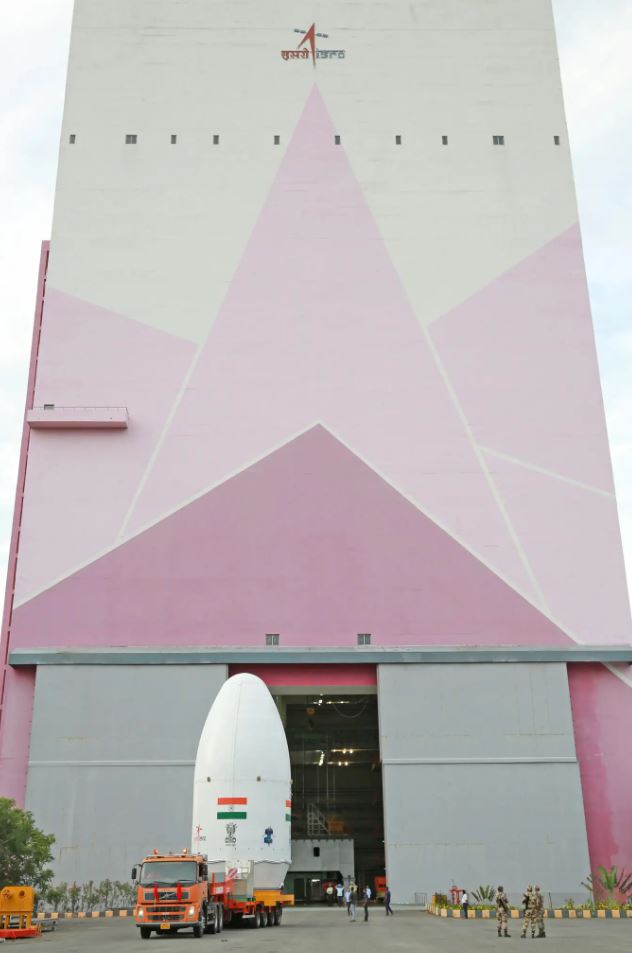A rocket launched from Sriharikota on India’s East Coast on Friday afternoon local time, resuming the country’s mission to return to the moon.
After India’s first robotic spacecraft crash-landed on the moon over four years ago, the nation decided to try again with Chandrayaan-3.
There has recently been a resurgence in enthusiasm for lunar expeditions like Chandrayaan-3. Six robotic missions from Russia, Japan, and the United States might travel there this year and next, and the United States and China also want to deploy humans there in the future years.
India takes great pride in its indigenous space programme, and if the robotic lander and rover onboard Chandrayaan-3 land safely, it would be the only country other than China to achieve this feat this century. India is also seeing the emergence of a new breed of commercial space startups.
India and the United States have agreed to launch a cooperative expedition to the International Space Station in 2019. India’s version of NASA, the Indian Space Research Organisation, is also working on a spaceship to transport humans into space.
Launch Vehicle Mark III took out from the Indian space facility on an island north of the city of Chennai on Friday at 2:35 p.m. local time (5:05 a.m. Eastern).
The rocket took up into the sky as cheering spectators waved Indian flags and colourful umbrellas. In the mission control centre, a burst of applause and cheers broke out once the spacecraft detached from the rocket’s upper stage sixteen minutes later.
After confirmation of the spacecraft’s successful orbital insertion, the atmosphere in the mission control room was upbeat on Friday. Some Indian space fans who made the trip to witness the launch did so with an optimistic outlook on Chandrayaan-3.
Neeraj Ladia, the 35-year-old CEO of astronomy equipment manufacturer Space Arcade, was among the roughly 100 automobiles stopped five miles from the ISRO complex at Sriharikota, watching the launch.
The Indian Space Research Organisation has further projects in the works beyond Chandrayaan-3. Gaganyaan, a spaceship being developed to transport people, has missed its initial target of a crewed flight by 2022, with the trip now not scheduled till at least 2025.
India has also joined the American-created Artemis Accords, a framework that establishes broad principles for civilian space travel. The agreements affirm the United States’ position that the 1967 Outer Space Treaty authorises the use of asteroidal, lunar, and planetary resources such as minerals and ice.
The NASA-ISRO Synthetic Aperture Radar (NISAR) project is another joint effort that will employ cutting-edge radar to carefully monitor changes to Earth’s land and ice surfaces. In 2024, India will be the launch site for the satellite. India is also interested in sending probes to the sun and Venus.
India may have competition from a slew of lunar expeditions. In August, Russia will send Luna 25, the latest in a series of robotic lunar missions. The final one, Luna 24, occurred in August 1976, years before the Soviet Union disintegrated.
The Japanese space agency JAXA’s Smart Lander for Investigating Moon, or SLIM, is also slated to launch to the moon in August.
As part of the Commercial Lunar Payload Services programme, NASA is funding three private company flights to the moon to deliver NASA equipment. The first C.L.P.S. expedition from Houston’s Intuitive Machines won’t leave for the Antarctic until at least the third quarter of this year.
The lander was built by Astrobotic Technology in Pittsburgh, but it can’t take off until United Launch Alliance’s new Vulcan rocket is operational.
This year, in April, the Japanese corporation Ispace made one attempt at landing on the moon. But the spaceship’s navigation system failed, leading to its destruction.

